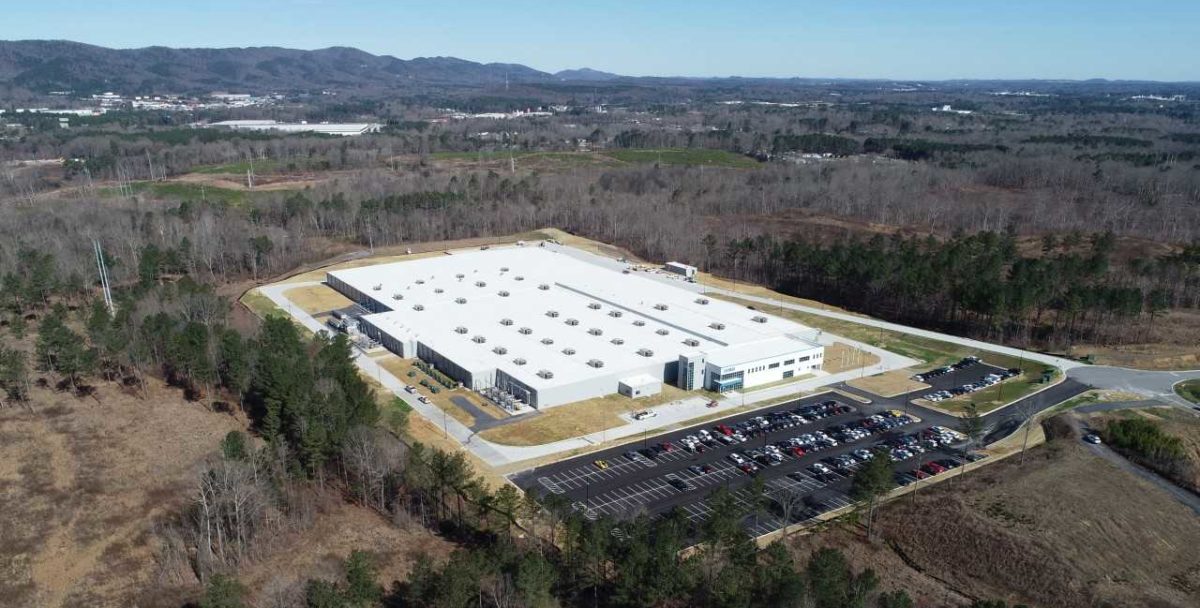From pv magazine USA
Qcells announced the successful completion of the expansion of its solar module factory in Dalton, Georgia where it added 2 GW of solar capacity, bringing the factory’s output to more than 5.1 GW.
The company said its Dalton factory is the largest manufacturing plant of its kind in the Western Hemisphere and the first solar panel plant expansion since the passage of the Inflation Reduction Act (IRA).
The expanded factory will manufacture nearly 30,000 solar modules a day, focusing on the new Q.TRON G2 residential solar module and a bifacial module for the commercial and utility markets. The company expects both products to achieve an ecolabel known as EPEAT, which is intended to help customers identify sustainably made products. QCells says the expanded factory will create 510 new jobs.
“Completing this factory marks the third expansion we’ve made in Dalton, and it’s just the beginning of Qcells’ larger mission to build a fully integrated solar supply chain in America,” said Justin Lee, CEO of Qcells. “The Inflation Reduction Act and the efforts of Georgia’s economic development team helped make these ambitious plans possible, and with it thousands of careers in clean energy. As we build new solar technology from Dalton and prepare for the start of Cartersville, it is critical that our local to federal leaders continue to work not only with us, but the larger industry to ensure our collective investments deliver for communities for decades to come.”
In January, QCells announced that it would invest more than $2.5 billion to build a complete solar supply chain in the U.S.. Considered the largest investment in U.S. solar history, it also made QCells, a subsidiary of Hanwha Solutions, the first company to establish a fully-integrated silicon-based solar supply chain in the U.S. Qcells intends to break ground on a new, state-of-the-art facility in Cartersville, Georgia, where it will manufacture 3.3 GW of solar ingots, wafers, cells and finished modules.
By 2024, between the Dalton and Cartersville facilities, Qcells anticipates its solar production capacity will reach 8.4 GW a year, or enough to power 1.3 million homes annually with clean energy.
Qcells opened its first factory in Georgia in 2019 and hired 750 people to manufacture 1.7 GW of solar. This initial investment was made possible in part by the Section 201 tariffs imposed on solar cells. Last year, Qcells announced a second expansion, which would add 1.4 GW to its manufacturing output and hire 535 more people. This now completed third expansion as well as the new facility that will manufacturing cells, wafers and ingots, follow the passage of the Solar Energy Manufacturing for America Act (SEMA) within the IRA and are made possible with support from Georgia’s economic development team.
Upon completed construction, Qcells estimates that its production in Georgia could avoid more than 12 million metric tons of CO2 equivalents per year while expanding domestic manufacturing of solar products amidst the push for Made-in-America clean energy solutions.
This content is protected by copyright and may not be reused. If you want to cooperate with us and would like to reuse some of our content, please contact: editors@pv-magazine.com.









By submitting this form you agree to pv magazine using your data for the purposes of publishing your comment.
Your personal data will only be disclosed or otherwise transmitted to third parties for the purposes of spam filtering or if this is necessary for technical maintenance of the website. Any other transfer to third parties will not take place unless this is justified on the basis of applicable data protection regulations or if pv magazine is legally obliged to do so.
You may revoke this consent at any time with effect for the future, in which case your personal data will be deleted immediately. Otherwise, your data will be deleted if pv magazine has processed your request or the purpose of data storage is fulfilled.
Further information on data privacy can be found in our Data Protection Policy.